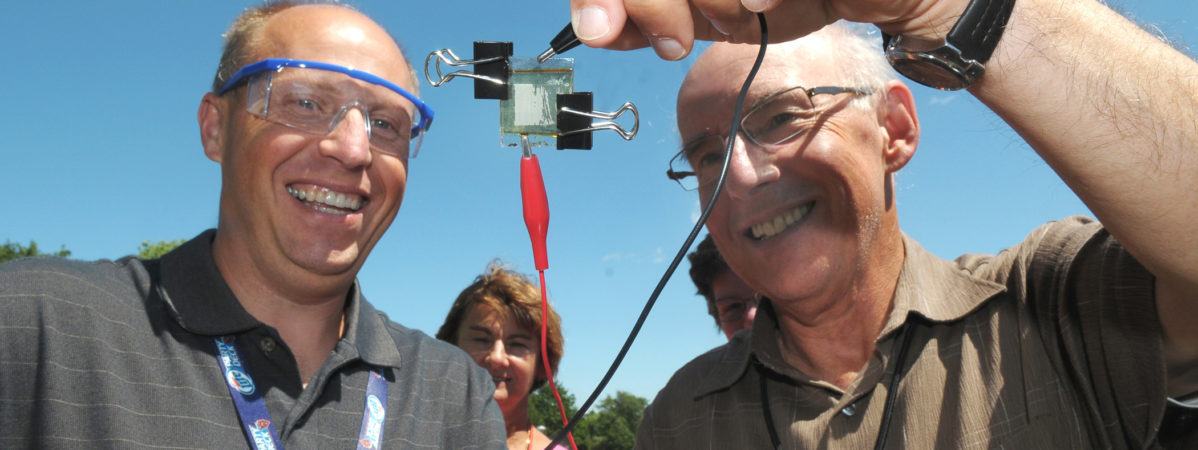
My father is a former police officer who took up photography when he retired. A few months ago, I asked him when he was going to try a new hobby. “Aren’t you an expert already?” I joked, pointing to his overbooked calendar of professional photography appointments.
“I have enough videos I still need to watch that I could fill up eight hours a day for the next four years,” he said incredulously. “I don’t have time to learn a new hobby yet.”
The videos were from lynda.com, a professional learning website he started frequenting when he first picked up a camera a few years ago. This wasn’t the first time my father constructed his own curriculum – many of my memories of him from the ’90s involve him scribbling furiously in a notebook while watching VHS tapes of the PBS show This Old House.
I’ve watched him create both a successful photography business and construct a two-story cabin from blueprints. In many circles, my father is respected for the vast array of skills and content knowledge he has gained through years of research and deliberate practice. What he’s missing, however, is the piece of paper that recognizes that knowledge – his highest level of educational attainment is a high school diploma.
The way we find, access, and share information has exploded in the last 20 years, and the pursuit and acquisition of knowledge is no longer reserved for the elite few. Now, anyone with an Internet connection (like my father!) can gain entry to the greatest public library system ever constructed.
Within our own profession, teachers are engaging in continued learning through personal learning networks, websites like Edutopia, and MOOCs. Anyone has the ability to self-construct curriculum and gain the skills once exclusive to those able to pay for a traditional education.
Despite the vast shift in how we pursue knowledge, little has changed with how we credential those who acquire knowledge. We still primarily credential learners based on seat time and credit hours, and often only recognize learning pursued through traditional pathways.
I’ve seen many teachers expand their knowledge of teaching strategies via Twitter chats or at Edcamps. Yet, when it came time to report continuing education credits, teachers still only reported professional development “hours” that involved seat time and structured in-service days. If we want to support personalized learning for our students, we should model those practices with our teachers. One way to achieve this is with a credentialing system that more accurately represents a teacher’s specific skills and knowledge.
Digital badges are one way to update the credentialing system. For years, the open badges movement has been pushing to update the way we recognize learning pursued through non-traditional pathways. For teachers, badges could be a way to demonstrate skills to potential employers, build identity and reputation within learning communities, and create pathways for continued learning and leadership roles.
Despite these benefits, digital badges still haven’t reached mass effect in our profession. To have value beyond a teacher’s blog or Twitter feed, digital badges need to have both rigor and market worth. They need to become micro-credentials.
Rigor can be achieved if leaders work together to develop competency and assessment frameworks to ensure high standards. A system filled with “junk” badges will have far less integrity than one filled with micro-credentials awarded by reputable organizations. Some initial considerations might be:
We can only achieve this integrity by working together to identify and promote quality principles and guidelines.
However, building digital badges with high integrity won’t be enough. For badges to have market worth, we need to develop an ecosystem that recognizes and supports teachers on a more granular level. Research shows that teachers who earn a Master’s degree don’t necessarily see an increase in student achievement, and yet current salary structures and professional development models are often tied directly to those macro-credentials. Teachers must be empowered to pursue new skills and knowledge in a more personalized way. This will require school districts, policy officials and unions to work together to establish a new structure for the way that educators are recognized and compensated.
Building micro-credentials that have rigor and market worth could be the first step toward updating our current paradigm of how we credential learning. If we truly want to build school-wide cultures that empower learners to grow as individuals, we need to provide personalized learning opportunities for all of our learners – including our teachers.